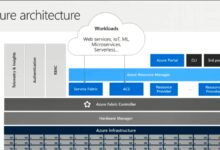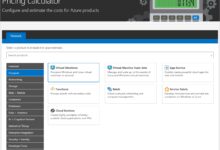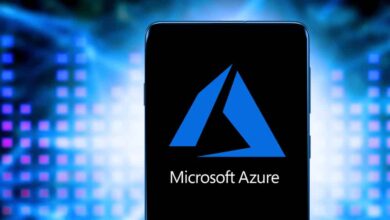Azure Log In: 7 Powerful Tips for a Seamless Experience
Logging into Azure doesn’t have to be complicated. Whether you’re a developer, admin, or business user, mastering the azure log in process is your first step toward unlocking Microsoft’s cloud power with confidence and security.
Understanding Azure Log In: The Gateway to Cloud Power

The azure log in process is more than just entering a username and password—it’s your secure entry point to Microsoft Azure, one of the world’s most powerful cloud computing platforms. Millions of users rely on Azure for virtual machines, data storage, AI tools, and enterprise applications. A smooth and secure login experience is essential for productivity and protection.
What Is Azure Log In?
Azure log in refers to the authentication process that grants users access to the Microsoft Azure portal, services, and resources. It typically involves verifying your identity using credentials tied to a Microsoft account or an organizational (work or school) account managed through Azure Active Directory (Azure AD).
- It supports both personal Microsoft accounts and enterprise identities.
- Authentication can be single-factor (password) or multi-factor (MFA).
- Access can be granted via web browser, CLI, SDKs, or mobile apps.
“Authentication is the foundation of cloud security. A compromised login can lead to data breaches, service outages, and compliance violations.” — Microsoft Security Best Practices
Why Azure Log In Matters for Businesses
For organizations, the azure log in process is not just about access—it’s about control, compliance, and continuity. Every login represents a potential entry point for threats, making secure authentication a top priority.
- Ensures only authorized users access sensitive cloud resources.
- Enables audit trails and monitoring of user activity.
- Supports role-based access control (RBAC) to limit permissions.
With cyberattacks on the rise, especially targeting cloud environments, a robust azure log in strategy is no longer optional—it’s essential. According to Microsoft, over 99.9% of compromised accounts lack multi-factor authentication, highlighting how critical secure login practices are.
Step-by-Step Guide to Azure Log In
Whether you’re logging in for the first time or troubleshooting access, following a clear process ensures success. Here’s how to perform an azure log in correctly and securely.
How to Log In to Azure via Web Portal
The most common way to access Azure is through the official portal at portal.azure.com. Follow these steps:
- Open your preferred web browser and navigate to https://portal.azure.com.
- Enter your email address (associated with your Microsoft or work/school account).
- Click “Next” and enter your password.
- If enabled, complete multi-factor authentication (MFA), such as approving a notification via the Microsoft Authenticator app.
- Upon successful verification, you’ll be redirected to the Azure dashboard.
This process may vary slightly depending on your organization’s security policies, such as conditional access rules or passwordless authentication methods.
Troubleshooting Common Azure Log In Issues
Even with the right credentials, users sometimes face issues during the azure log in process. Here are some frequent problems and their solutions:
- Forgot Password: Use the “Forgot password?” link to reset it. If using a work account, contact your IT administrator.
- Account Locked: After multiple failed attempts, accounts may lock temporarily. Wait 15–30 minutes or contact support.
- MFA Not Working: Ensure your authenticator app is synced, or use backup methods like SMS or phone call.
- Location-Based Access Denied: Some organizations restrict logins from certain countries or IP ranges. Use a trusted network or contact your admin.
For persistent issues, visit the Azure AD sign-in troubleshooting guide for detailed diagnostics.
Azure Active Directory: The Engine Behind Azure Log In
Azure Active Directory (Azure AD) is the identity and access management service that powers every azure log in. It’s not just a directory—it’s a comprehensive platform for managing users, groups, apps, and security policies across the cloud.
How Azure AD Manages User Identities
Azure AD acts as the central hub for user authentication and authorization. When you initiate an azure log in, Azure AD verifies your identity and checks your permissions before granting access.
- Stores user profiles, passwords, and group memberships.
- Integrates with on-premises Active Directory via Azure AD Connect.
- Supports social identity providers (e.g., Google, Facebook) for customer-facing apps.
Unlike traditional on-prem AD, Azure AD is cloud-native, scalable, and designed for modern authentication protocols like OAuth 2.0, OpenID Connect, and SAML.
Different Types of Azure AD Accounts
Understanding account types helps streamline the azure log in experience:
- Work or School Account: Created by an organization in Azure AD. Used by employees to access corporate resources.
- Microsoft Account (MSA): Personal accounts (e.g., @outlook.com, @hotmail.com) that can also be used to access Azure if granted permissions.
- Guest Users: External collaborators invited via Azure AD B2B collaboration.
Admins can manage these identities through the Azure portal under “Azure Active Directory > Users.” Proper account classification ensures correct access levels and compliance.
Multi-Factor Authentication: Securing Your Azure Log In
One of the most effective ways to protect your azure log in is by enabling Multi-Factor Authentication (MFA). MFA adds an extra layer of security beyond passwords, making unauthorized access significantly harder.
Why MFA Is Critical for Azure Security
Passwords alone are vulnerable to phishing, brute force attacks, and credential stuffing. MFA mitigates these risks by requiring a second form of verification.
- Reduces the likelihood of account compromise by over 99.9%.
- Complies with regulatory standards like GDPR, HIPAA, and NIST.
- Supported across all Azure services and integrated applications.
Microsoft reports that accounts with MFA enabled are nearly immune to automated attacks. Given that 80% of data breaches involve stolen credentials, MFA is a non-negotiable security measure.
Setting Up MFA for Azure Log In
Admins can enforce MFA for all users or specific groups. Here’s how to configure it:
- Sign in to the Azure portal as a Global Administrator.
- Navigate to “Azure Active Directory > Security > Multi-Factor Authentication.”
- Select users and click “Enable.”
- Users will be prompted to register their second factor (app, phone, SMS, etc.).
- Enforce MFA via Conditional Access policies for stricter control.
For a seamless user experience, recommend the Microsoft Authenticator app, which supports push notifications and time-based one-time passwords (TOTP).
“Security is not a feature—it’s a responsibility. Enabling MFA is one of the simplest yet most powerful steps you can take.” — Microsoft Security Team
Conditional Access and Smart Sign-In Policies
Modern cloud environments demand intelligent access controls. Conditional Access in Azure AD allows organizations to apply dynamic rules to the azure log in process based on risk, location, device, and user behavior.
What Is Conditional Access?
Conditional Access is a feature of Azure AD Premium that lets administrators create policies to allow, require, or block access to resources based on specific conditions.
- Conditions include user risk level, sign-in risk, device compliance, location, and application sensitivity.
- Policies are evaluated in real-time during each azure log in attempt.
- Actions can include requiring MFA, blocking access, or requiring compliant devices.
For example, a policy might require MFA when a user logs in from an unfamiliar country or block access from unmanaged devices.
Creating Your First Conditional Access Policy
Here’s how to set up a basic policy to enhance your azure log in security:
- Go to “Azure Active Directory > Security > Conditional Access.”
- Click “+ New policy” and give it a name (e.g., “Require MFA for Admins”).
- Under “Users and groups,” select administrators (e.g., Global Admins, Security Admins).
- Under “Cloud apps,” select “Microsoft Azure Management.”
- Under “Conditions,” optionally specify locations or device states.
- Under “Access controls,” select “Grant” and check “Require multi-factor authentication.”
- Enable the policy and click “Create.”
Always test policies in “Report-only” mode first to avoid locking out critical users.
Passwordless Authentication: The Future of Azure Log In
The traditional password is becoming obsolete. Microsoft is pushing toward a passwordless future, and Azure is at the forefront. Passwordless authentication eliminates the risks associated with passwords while improving user experience.
What Is Passwordless Authentication?
Passwordless authentication replaces passwords with more secure and convenient methods such as biometrics, security keys, or mobile app approvals.
- Uses FIDO2 security keys, Windows Hello, or the Microsoft Authenticator app.
- Eliminates phishing risks since there’s no password to steal.
- Provides faster, frictionless sign-ins.
For example, a user can log in to Azure by simply approving a notification on their phone or using their fingerprint on a compatible device.
How to Enable Passwordless for Azure Log In
To set up passwordless authentication:
- Ensure users are registered in Azure AD and have a supported device.
- Go to “Azure Active Directory > Security > Authentication methods.”
- Enable methods like “FIDO2 Security Key” or “Microsoft Authenticator.”
- Instruct users to register their device via https://mysignins.microsoft.com/security-info.
- Encourage users to set up multiple authentication methods for redundancy.
Once configured, users can sign in without entering a password—just their username and a second factor, which now acts as the primary credential.
Azure Log In for Developers and Service Principals
Not all azure log in scenarios involve human users. Developers and automation scripts often need to authenticate programmatically using service principals or managed identities.
What Are Service Principals?
A service principal is an identity created in Azure AD to represent an application, service, or automation tool. It allows non-interactive azure log in for accessing Azure resources.
- Used by apps, scripts, and CI/CD pipelines.
- Assigned specific roles via RBAC (e.g., Contributor, Reader).
- Can authenticate using client secrets, certificates, or managed identities.
For example, a DevOps pipeline might use a service principal to deploy virtual machines without human intervention.
Creating and Using a Service Principal
To create a service principal via Azure CLI:
az ad sp create-for-rbac --name "MyAppServicePrincipal" --role Contributor --scopes /subscriptions/{subscription-id}This command returns credentials (appId, password, tenant) that can be used in code or configuration files. Always store these securely—preferably in Azure Key Vault.
Alternatively, use Managed Identities for enhanced security. Managed identities are automatically managed by Azure and eliminate the need to handle secrets manually.
Best Practices for Secure and Efficient Azure Log In
Securing the azure log in process isn’t a one-time task—it requires ongoing attention and optimization. Follow these best practices to maintain a robust and user-friendly authentication system.
Enforce Multi-Factor Authentication for All Users
MFA should be mandatory, not optional. Use Conditional Access policies to enforce MFA for all users, especially those with elevated privileges.
- Apply MFA to global admins, subscription owners, and security roles.
- Use risk-based policies to trigger MFA only when anomalies are detected.
- Provide user training to reduce friction and increase adoption.
Monitor Sign-In Activity Regularly
Azure AD provides detailed sign-in logs that help detect suspicious activity.
- Access logs via “Azure Active Directory > Monitoring > Sign-in logs.”
- Look for failed logins, impossible travel, or unfamiliar locations.
- Set up alerts for high-risk sign-ins using Azure Monitor or Microsoft Defender for Cloud.
Regular audits help identify compromised accounts before they cause damage.
Implement Role-Based Access Control (RBAC)
Limit user permissions to the minimum required for their role. This principle of least privilege reduces the impact of a compromised azure log in.
- Assign built-in roles like Reader, Contributor, or Owner based on need.
- Create custom roles for granular control.
- Review access assignments quarterly and remove unused permissions.
“The best security is invisible. When users can do their jobs securely without friction, everyone wins.” — Azure Security Architect
How do I reset my Azure password?
If you’re using a Microsoft account, go to https://account.live.com/password/reset to reset your password. For work or school accounts, contact your organization’s IT administrator or use the self-service password reset (SSPR) feature if enabled.
Can I use single sign-on (SSO) for Azure log in?
Yes, Azure supports SSO through Azure AD. Organizations can integrate Azure with on-premises directories or third-party identity providers (e.g., Okta, Ping Identity) to allow users to log in once and access multiple applications seamlessly.
What should I do if I’m locked out of my Azure account?
If you’re locked out, wait 15–30 minutes for the lockout to expire. If the issue persists, contact your Azure administrator or Microsoft Support. Admins can unlock accounts via the Azure portal under “Users > Profile > Sign-in status.”
Is there a mobile app for Azure log in?
Yes, the Microsoft Authenticator app enhances security and simplifies the azure log in process by providing push notifications, TOTP codes, and passwordless sign-ins. Download it from the official Microsoft page.
How can I improve the speed of my Azure log in?
To speed up the azure log in process, use passwordless methods like the Microsoft Authenticator app, ensure your browser is updated, clear cache regularly, and avoid public or slow networks. Organizations can also implement Azure AD Seamless SSO for automatic sign-ins on corporate devices.
Mastering the azure log in process is essential for anyone using Microsoft’s cloud platform. From basic access to advanced security configurations, every step—from entering credentials to enabling MFA and setting up conditional policies—plays a crucial role in protecting your digital assets. By following best practices like enforcing multi-factor authentication, monitoring sign-in activity, and adopting passwordless methods, you can ensure a secure, efficient, and future-ready authentication experience. Whether you’re an admin, developer, or end-user, a well-managed azure log in is your first line of defense and your gateway to innovation in the cloud.
Further Reading:









